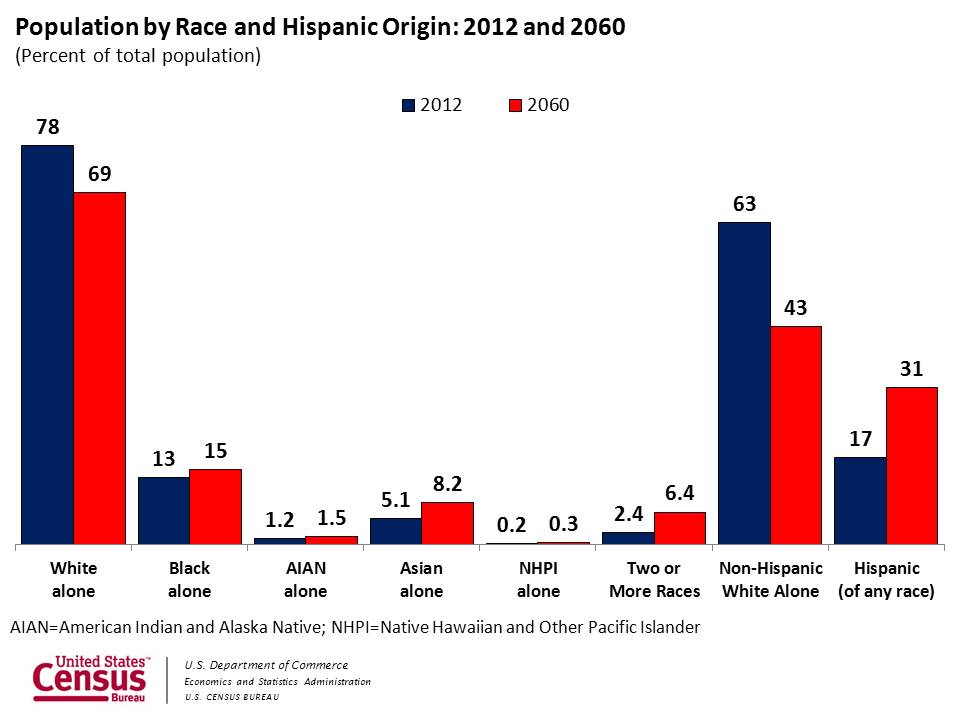
However, for those concerned about the racial makeup of the replacement population, this chart shows that the difference in total fertility rate among ethnic classes is very modest.

However, for those concerned about the racial makeup of the replacement population, this chart shows that the difference in total fertility rate among ethnic classes is very modest.
Know so many late 20, early 30 somethings that just are so unbelievably immature for their ages. They are so into the partying, the traveling to exotic places, living for themselves — even if they’re married!
When you mention kids they just gasp and comment that they can “barely take care of themselves,” much less a child. I just have to shake my head.
Hubby and I had two kids before we were 30, and I’m damn glad we did. I’m exhausted at 50 and still raising a 12 year old as well. I would NEVER want to have kids so late in life as these kids will, if they ever hatch.
But will they regret their choices? Who knows ...maybe they will have fond memories of their younger years. I’m glad my own daughter will have her career established before she has children, but she’s going to go through life one tired gal.
Actually, it is very significant. These differences spell rapid demographic change. Anything below 2.1 is below replacement level. And when you add immigration to the mix, the impact is multiplied. See my post #15.
From the Bureau of the Census Press Release Dec 12, 2012:

"The non-Hispanic white population is projected to peak in 2024, at 199.6 million, up from 197.8 million in 2012. Unlike other race or ethnic groups, however, its population is projected to slowly decrease, falling by nearly 20.6 million from 2024 to 2060. Meanwhile, the Hispanic population would more than double, from 53.3 million in 2012 to 128.8 million in 2060. Consequently, by the end of the period, nearly one in three U.S. residents would be Hispanic, up from about one in six today.
The black population is expected to increase from 41.2 million to 61.8 million over the same period. Its share of the total population would rise slightly, from 13.1 percent in 2012 to 14.7 percent in 2060.
The Asian population is projected to more than double, from 15.9 million in 2012 to 34.4 million in 2060, with its share of nation's total population climbing from 5.1 percent to 8.2 percent in the same period.
Among the remaining race groups, American Indians and Alaska Natives would increase by more than half from now to 2060, from 3.9 million to 6.3 million, with their share of the total population edging up from 1.2 percent to 1.5 percent. The Native Hawaiian and Other Pacific Islander population is expected to nearly double, from 706,000 to 1.4 million. The number of people who identify themselves as being of two or more races is projected to more than triple, from 7.5 million to 26.7 million over the same period.
The U.S. is projected to become a majority-minority nation for the first time in 2043. While the non-Hispanic white population will remain the largest single group, no group will make up a majority.
All in all, minorities, now 37 percent of the U.S. population, are projected to comprise 57 percent of the population in 2060. (Minorities consist of all but the single-race, non-Hispanic white population.) The total minority population would more than double, from 116.2 million to 241.3 million over the period.
Other highlights:
The nation’s total population would cross the 400 million mark in 2051, reaching 420.3 million in 2060.
The proportion of the population younger than 18 is expected to change little over the 2012-2060 period, decreasing from 23.5 percent to 21.2 percent.
In 2056, for the first time, the older population, age 65 and over, is projected to outnumber the young, age under 18.
The working-age population (18 to 64) is expected to increase by 42 million between 2012 and 2060, from 197 million to 239 million, while its share of the total population declines from 62.7 percent to 56.9 percent.
The ratio of males to females is expected to remain stable at around 104.7 males per 100 females for the population under the age of 18. For the population age 18 to 64, the ratio of males per 100 females is projected to be 98.9 in 2012 and increase to 104.1 in 2060. The ratio for the population age 65 and over is also projected to increase, from 77.3 males per 100 females in 2012 to 84.4 in 2060.